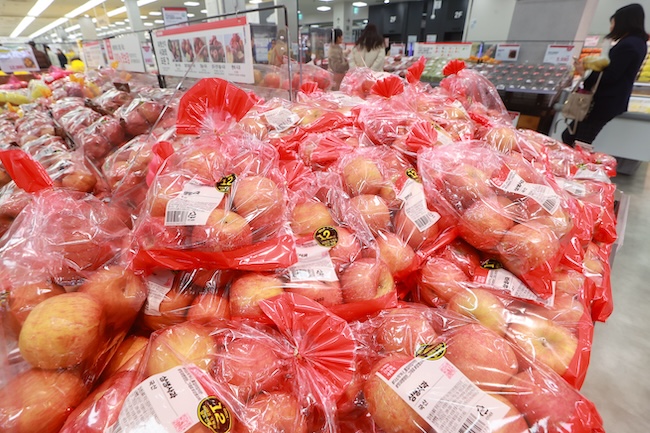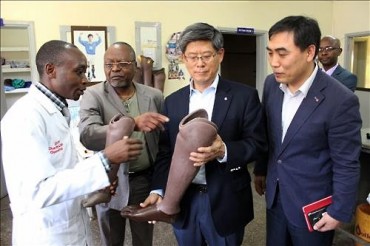
The South Korean apple industry faces significant challenges, with a 30% reduction in last year’s apple production causing prices to skyrocket. (Image courtesy of Yonhap)
SEOUL, Mar. 4 (Korea Bizwire) – The South Korean apple industry faces significant challenges, with a 30% reduction in last year’s apple production causing prices to skyrocket.
Further compounding the issue, a report released on March 2 by the Korea Rural Economic Institute predicts a 8.6% decrease in apple cultivation areas over the next decade.
According to the institute’s “Agricultural Outlook 2024″ report, current apple orchards span approximately 33,800 hectares, a figure expected to gradually shrink to 30,900 hectares by 2033.
This decline represents a loss of around 2,900 hectares of apple orchards, equivalent to nearly 4,000 soccer fields.
The decrease in mature tree areas, due to factors such as variety renewal, orchard aging, and shifts to other crops, is particularly noteworthy. From 24,700 hectares in 2022, these areas are anticipated to drop to 22,800 hectares by 2033.
Consequently, apple production is forecasted to dip from 502,000 tons this year to 485,000 tons in 2033.
The reduction in last year’s apple harvest was primarily attributed to adverse weather conditions, including spring frosts and frequent summer rainfall, leading to fewer fruits and increased drop rates.
Additionally, diseases like apple scab and bitter rot further impacted the harvest season.
The scarcity of apples has led to a significant price increase of 29.3% compared to last year. As reported by the Korea Agro-Fisheries & Food Trade Corporation, the average retail price for a pack of ten apples reached 29,088 won last month, up sharply from 22,784 won a year ago.
In some cases, individual apples are selling for as much as 5,000 won, highlighting the inflationary pressures resulting from the supply crunch.
In response to the escalating prices, the Ministry of Agriculture, Food and Rural Affairs is promoting the sale of non-standard fruits (often referred to as “ugly fruits”) in collaboration with major supermarkets, in an effort to mitigate the impact on consumers.
Ashley Song (ashley@koreabizwire.com)






